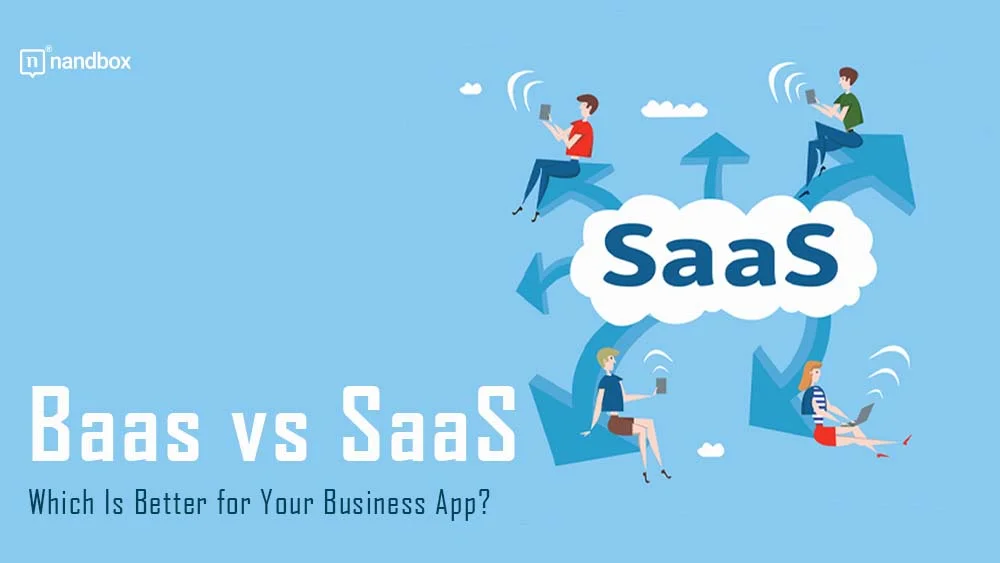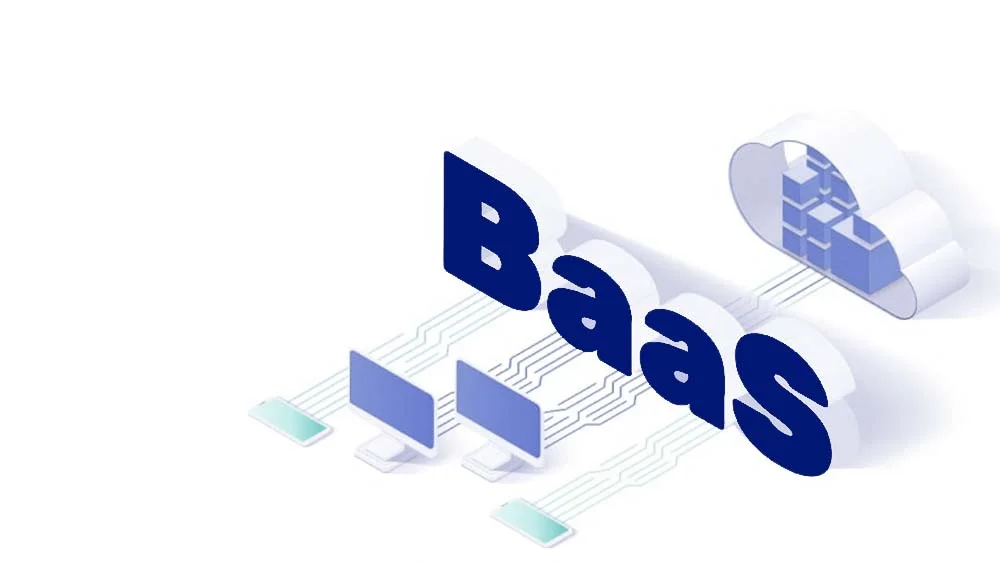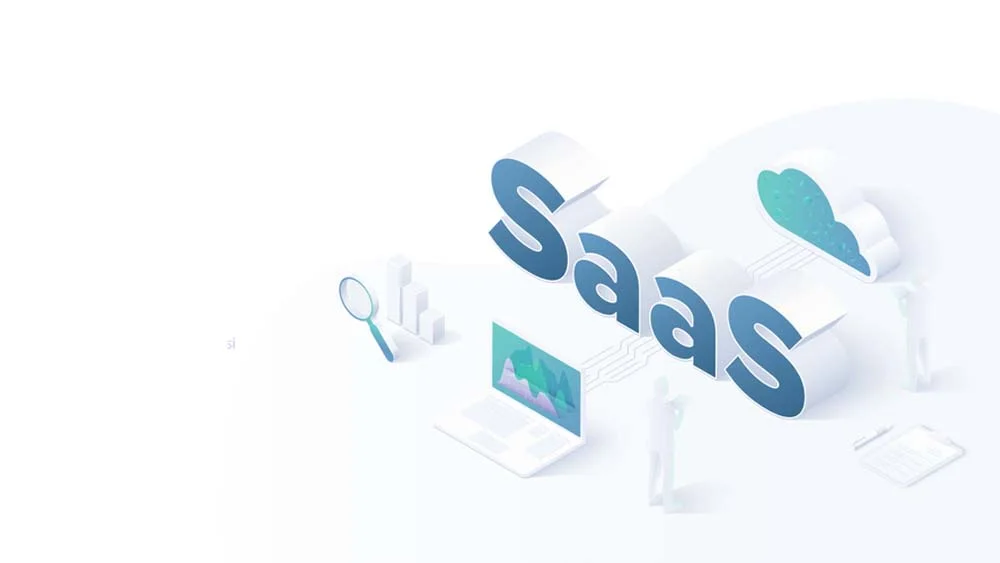Helping your business grow is something of great importance, and you should consider it a top priority. Currently, there are two main business models that developers consider the top two for software development. These two models go by the names SaaS and BaaS. When it comes to developing a business app, choosing the right platform is crucial. Two popular options are BaaS (backend as a service) and SaaS (software as a service). But which one is better for your business? This guide will help you understand the differences between the two. Additionally, it will help you make an informed decision and know the difference in a small BaaS vs. SaaS comparison.
BaaS vs. SaaS: A Quick Overview
Taking advantage of the ongoing technology revolution has resulted in the emergence of a diverse set of new business models. Backend as a Service (BaaS) and Software as a Service (SaaS) are two of the most common and widely used alternatives, as we mentioned before.
Despite the fact that they are not the same thing, they could look the same at first. Nevertheless, these two models diverge in significant ways in a number of important respects. In order to provide you with a more in-depth comprehension of these concepts, let’s compare and contrast BaaS vs. SaaS.
What Is a Backend as a Service (BaaS)?
Let’s begin by discussing what “BaaS” stands for and how it can assist in the expansion of your business. There are two primary approaches to development that you can take when making a mobile application.
The front end is also known as what the users will actually see and be able to interact with. The next step is back-end development, which is where developers store the more sophisticated tools they use to improve the program. When you wish to throw in a new back-end function, it will typically take a significant amount of effort to test and improve each one individually.
On the other hand, BaaS businesses simplify this process for you. For instance, they may provide a variety of application programming interfaces (APIs) and features, such as push notifications, social login, and data models. These features can provide you with access to a variety of cutting-edge tasks. For instance, they can assist your consumers in connecting to your app using a single sign-on process that you integrate with social networking. In addition to this, they enable you to operate your application in an environment with a fully managed infrastructure. If you run a SaaS business or are planning to buy a saas business, make sure you have a proper SaaS Agreement in place.
A New Market Revolution
Since it didn’t start gaining traction as a trend until 2011, this is one of the most cutting-edge developments in the hospitality sector. However, since that time, this concept has started to gain traction, making it significantly simpler for anyone to create apps that are both aesthetically pleasing and functional. Finding the appropriate BaaS package and integrating it into your existing app is all we require of you at this point. Let’s look at SaaS now that we have a better understanding of what BaaS is and how it operates.
What Is Software as a Service (SaaS)?
Software refers to the various applications and programs that can be run on a computer. If you wanted to compose a document, for instance, you could launch a software application such as Microsoft Word to do it. Historically, if a company wished to utilize a program similar to this one, they were required to design it themselves and host it on their own servers.
It’s possible that this will be an expensive and time-consuming process. As a result of this factor, the popularity of SaaS companies began to increase. They will provide you with the program, which you can access on your computer via the Internet. SaaS providers will cover the expenses of this program. Additionally, they will also be the ones responsible for hosting it.
They are able to provide their services at a competitively low cost because they require a nominal monthly payment from their customers in exchange for providing this service. Since they were made available to the public, this category of service has seen explosive growth, and numerous SaaS businesses have garnered the attention of the general public.
On the other hand, this fact also indicates that there is a great deal of competition in this sector, as there are many different kinds of SaaS companies that operate in the same field – often turning to a SaaS marketing agency to gain an edge. Because of this, there has been an increase in innovation, as everyone is working to ensure that their software offers the consumer greater advantages.
BaaS vs. SaaS: What Are Their Main Differences?
Now that we are aware of what each of these models means, we may examine some of their distinctions and differences. First off, backend as a service is a much more recent notion than software as a service, as we have mentioned. Because of this, as this market continues to expand, there is less rivalry. Additionally, there is a smaller selection of products available for clients to select from.
The purposes that these services serve are another noteworthy distinction. BaaS specifically focuses on assisting platform development for developers. Push alerts, social login, email notifications, and other features that help individuals create repeatable codes are present in the majority of their products.
SaaS apps, however, can be employed in a variety of contexts. A service that can assist you with anything from bookkeeping to video editing, for instance, is available. Because of this, SaaS businesses frequently find it simpler to penetrate the mainstream and amass a sizable user base more quickly.
The Differences of How Both Operate
These two services tend to have distinct ways of letting customers try them out because of how differently they operate. SaaS firms typically provide a free trial for the first month so that customers can get a feel for how the program works.
On the other side, BaaS businesses may create and distribute some apps without charge. Additionally, some BaaS businesses can decide to make their solutions available as open source. As a result, the customer can use and modify the frameworks at no cost.
Finally, switching from one SaaS provider to another tends to be simpler for customers. Most of the time, there are many options available, so you can try a different provider if one doesn’t work. Since BaaS is more recent—we talked about it—there are fewer possibilities.
Additionally, programmers will need to create and integrate the backend code into their apps for these services to function. It can be difficult to eliminate a newer service without having an impact on the application’s entire backend.
Factors to Consider When Choosing Between BaaS vs. SaaS
There are a number of aspects to take into consideration before settling on either BaaS or SaaS for your company’s app needs. First, you need to think about how complicated your application is and whether or not it has to be customized. BaaS could be the superior choice. Only if the requirements for your application are particularly extensive or if it must be tailored to meet your unique specifications.
Second, assess your data security requirements. Because it enables you to keep data on your own servers, BaaS may be the superior choice for you. That is, if you have stringent needs regarding data security. Finally, take into account the financial constraints and scalability requirements. SaaS may be ideal for larger firms with more sophisticated requirements, as it may be more cost-effective and scalable for those businesses. BaaS, on the other hand, may be more appropriate for smaller enterprises.
Examples of Successful BaaS and SaaS Implementations
Both Software as a Service (SaaS) and Back-End as a Service (BaaS) have seen a lot of success in the corporate world. Firebase, Kinvey, and AWS Amplify are a few examples of BaaS system models that people implement effectively. These platforms provide enterprises that are trying to construct complicated apps with a variety of features and possibilities for customization to choose from.
On the other hand, examples of system models that have been successfully implemented as SaaS include the ubiquitous Salesforce, HubSpot, and Dropbox. These platforms appeal to a wide variety of organizations because they provide a comprehensive set of services and features that are suitable for companies of varying sizes. In the end, your company’s specific needs and requirements will determine whether to use BaaS or SaaS.
Final Thoughts on Our BaaS vs. SaaS Topic
New start-ups provide novel business solutions today. SaaS and BaaS are two of the most common choices. However different their methods are, Your business state will determine the best one that suits you. Our BaaS vs. SaaS comparison can help you decide, which is why we created this guide in the first place. Want to talk business? There is a solution for you if you’re looking for something that you could empower your business with. That is the creation of a native app with a no-code solution like ours.
Our native no-code solution, nandbox, is the only native app builder in the market currently that offers you a complete SaaS platform service. That is, to help you create a much more enhanced app without the hassle of hiring developers or any IT teams that could affect your app’s business vision. Sign up now for nandbox’s native no-code app builder and create a seamless app for a fraction of the cost and a minimum rate of wasting your efforts!





